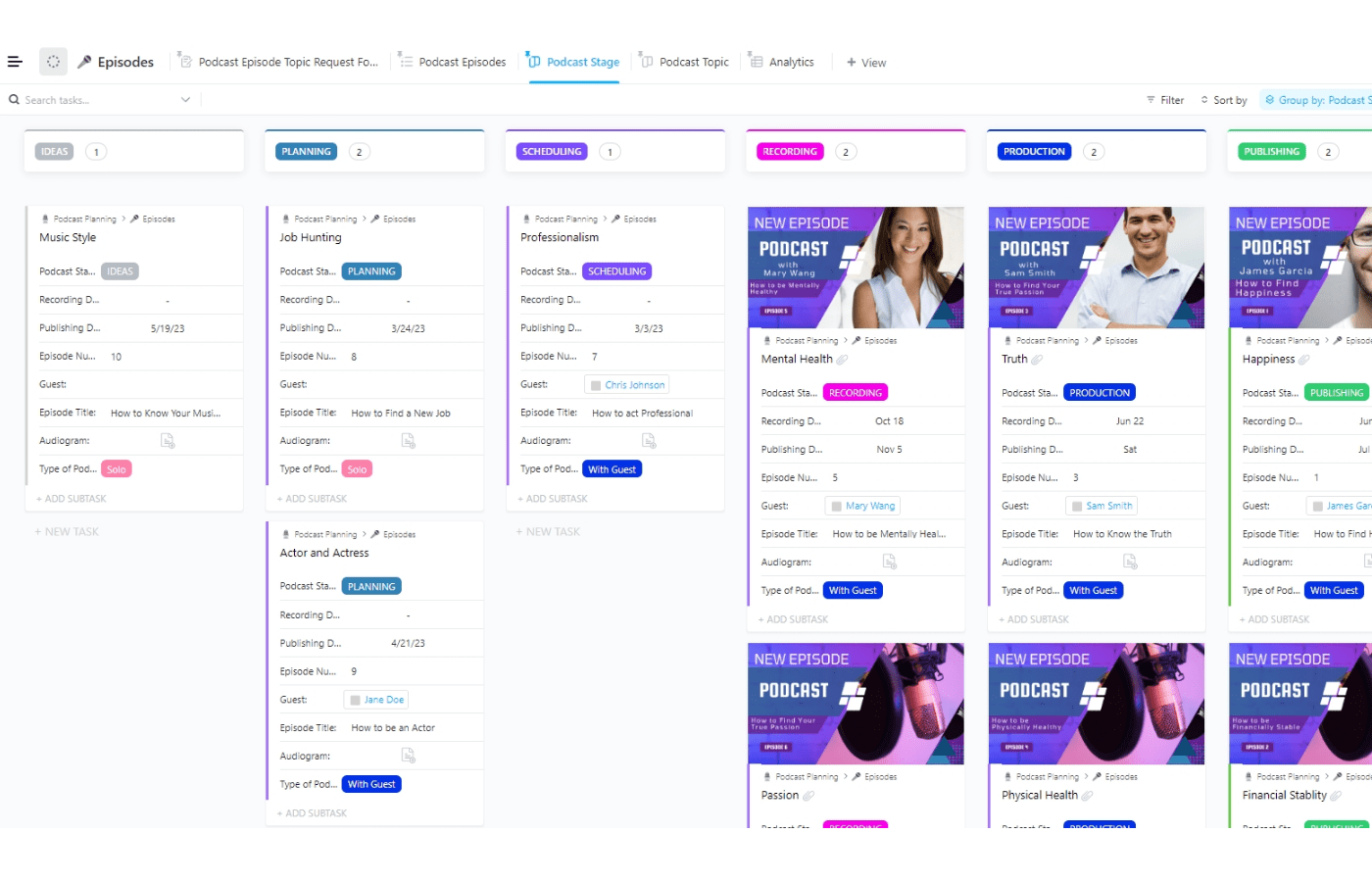Key takeaways
Navigating the complex climate of project management with tight timelines and limited resources is tricky, and with the demands of the process, effective leadership becomes crucial for success. Leadership in project management is more than just assigning tasks. It also involves creating a vision, inspiring and motivating the team, making informed decisions, and solving complex problems with the insight to identify them even before they arise.
Good leadership requires an individual ready to take the helm, unify the team and direction, inspire collaboration, and drive a project to a successful outcome.
Let’s delve deeper into why leadership is essential in project management and how it contributes to project success.
What is the Role of Leadership in Project Management?
Setting visions and goals
Setting visions and goals in the context of project management means defining what the project aims to achieve (vision) and outlining specific, measurable, achievable, relevant, and time-bound objectives (goals) to guide the project from discovery to launch.
An example of setting visions and goals for a software development project might look like this:
Vision
Engage customers, increase their interactions, and ultimately boost customer satisfaction and loyalty to the brand by developing an intuitive, user-friendly site that uses AI to provide a personalized shopping experience.
Goals
- Launch the app’s beta version by Q2, incorporating at least four AI-driven features.
- Achieve a user satisfaction score of over 85% within the first 6 months post-launch.
- Gain 150,000 active users within one year of launch through targeted marketing, email campaigns, and app store optimization.
Inspiring and motivating the team
Inspiring and motivating the team in project leadership and management involves energizing and encouraging team members to perform at their best.
Inspiring the team
This is a team-building effort accomplished by creating a compelling vision for the project that resonates with everyone, making them feel a part of something bigger than themselves, and validating their work as meaningful. Inspiration in project leadership is about creating enthusiasm, pursuing a passion, and gaining a sense of purpose. It’s about storytelling, showing the project’s impact, and mapping individual roles to its success.
Motivating the team
Motivation in project leadership and management is about providing the drive to accomplish tasks and meet goals. It includes recognizing achievements, fostering a positive work environment, setting clear expectations, giving feedback, and ensuring team members feel valued and supported. Motivation can be intrinsic (driven by personal satisfaction or interest in the work) or extrinsic (encouraged by rewards, recognition, or career advancement).
An example of inspiring the team through storytelling is during team meetings: the project leader tells how similar technology has changed lives in another part of the world, inspiring the team by showing the real-world impact of their work.
An example of motivating the team is providing consistent, constructive feedback. After completing a project, the project manager has one-on-one or group lessons-learned sessions to discuss what went well and what could be improved.
Decision-making and problem-solving
Decision-making and problem-solving in project management are essential skills that make projects run smoothly.
Decision-making
This process involves choosing the best course of action from many options to address specific issues or to advance the project toward its objectives. This skill requires thorough analysis, insight, quick thinking, and seeing that the project stays on track, meets its goals, and adapts to changes quickly.
Problem-solving
This is identifying and defining a problem, diagnosing its causes, identifying possible solutions, analyzing and choosing the most effective one, and implementing and evaluating the solution thoroughly. Effective problem-solvers have analytical skills, creativity, and practical wisdom to navigate obstacles, minimize project risks, and ensure the work progresses to completion.
Decision-making when selecting a vendor might look like this:
Scenario: The project requires specialized programming of specific software, and two vendors offer similar services but at different prices and with varying delivery schedules.
Decision: After evaluating the vendors based on reliability, cost, delivery time, and after-sales support, a project stakeholder chooses the vendor with a slightly higher price but better after-sales service and a proven track record.
Problem-solving when team conflict arises might look like this:
Scenario: Two team members have differing views on the approach to a task, stalling progress.
Solution: Facilitate a meeting where both parties can express their views and use conflict resolution techniques such as negotiation or a third choice that includes elements of both arguments. Set clear expectations and roles to avoid future conflicts.
6 Key Skills of an Effective Project Leader
- Communication: Conveying clear and concise information, actively listening, and engaging in productive dialogue with the team, stakeholders, partners, and others cements alignment on the project. It builds trust, which is useful during collaboration and conflict resolution.
- Adaptability: Being flexible when responding to changes, challenges, and unexpected situations throughout all phases of the project management life cycle helps the team navigate confidently. It keeps the project moving forward despite interruptions with new strategies so the work does not fail.
- Delegation: Changing responsibility and shifting assignments to others is a tactic used to positively cover a shortfall, efficiently use talents, and turn weaknesses into strengths to achieve desired outcomes.
- Decision-making: Selecting the best course of action from various options is a skill used to recover from uncertainty, manage risks, and push forward promptly.
- Problem-solving: Identifying issues early, analyzing their root causes, and developing and implementing a solution keeps the project on track. It builds team capability and resilience and prepares them for any future problem.
- Time management: From planning and organizing to execution, managing time on the task, goal, and project level is a juggling act of keeping all the balls in the air until the project is completed on time and within budget.
Project Leadership vs Project Management
Project leadership and project management are keys to project success, but they play distinct roles depending on the project type and scale. Large-scale, complex projects with significant impact and global reach often face constraints like timeframes, budgets, and market dynamics. These projects need strong leadership and management to navigate multi-phased implementations and testing created by diverse and distributed teams.
Leadership involves setting a flexible and innovative style to guide the project to success. Leaders focus on team building and motivation, making sure that team members from various disciplines work well together. During planning, leaders guide the team and stakeholders through detailed project exercises to fully understand requirements and anticipate changes and outcomes. Influential leaders steer the team through change management, leveraging change to the project’s advantage. They nurture creativity, support calculated risks, and give credit where it’s due—all contributing to project success.
On the other hand, management is more about maintaining control over the project’s operational details. Project managers see to it that resources are properly assigned so the project stays on schedule and budget. They focus on the practicalities of getting the job done, using established processes and methodologies to keep the project running smoothly and according to plan.
While project management focuses on execution, project leadership is more about inspiring and guiding the team toward the project’s vision. Both are necessary, and the project leader is there to make sure their application is tailored to the specific needs of the project at hand.
How to Become an Effective and Efficient Project Manager
To be more efficient in project management involves skills development, gaining experience, and adopting best practices.
Obtain a degree and certification
Put in the time and effort to get a degree in project management, business administration, or any related field. This can be accomplished online or through classes at designated schools. Obtain certifications such as PMP, PRINCE2, Agile (Scrum Master, AgilePM), and CAPM.
Gain practical experience
Start small by managing parts of projects within your current role. Consider volunteering for project management roles in local community organizations or events. You can also seek internships or entry-level positions and spend valuable time working under experienced project managers for advancement.
Develop essential skills
Learn technical skills using project management software like Microsoft Project, Asana, Trello, and Jira, while also exploring their risk and financial management features. Master communication, leadership, negotiation, time management, and problem-solving skills in a professional setting.
Adopt best practices
Learn, understand, and apply methodologies like waterfall, Agile, Scrum, Lean, or hybrid approaches and where they are best used. Plan and define objectives, create a workback schedule, schedule tasks, allocate resources, conduct risk assessments, and implement change management. Focus on managing stakeholders, ensuring quality, and establishing a communication plan.
Stay updated
Commit to staying updated with new tools, trends, and methodologies. Attend professional development events and read relevant books, articles, and blogs. Join and participate in online groups and forums with peers. Conduct post-project analyses to learn and improve, and document and share with your team.
Expand your network
Make the most of your connections in the professional management space and everything you know about the industry. Join professional bodies like PMI and seek out a mentor for guidance and feedback.
Leverage technology
Software tools make things easier for project managers, so they don’t have to reinvent the wheel for each new effort. Use automation tools and collaboration platforms to enhance your PM efficiency.
Master time management
Learn how to effectively prioritize tasks and allocate specific time blocks for different tasks or phases. Break larger items down into more digestible pieces to easily flow from one to the next.
Be emotionally resilient
Remember to take care of yourself. Learn stress management techniques that will allow you to adapt to changing plans.
Observe ethical standards at all times
Follow the rules and adhere to ethical standards and maintain fairness and integrity in all project and business dealings.
Top 3 Project Leadership Styles
Transformational leadership
Transformational leadership is characterized by inspirational motivation, intellectual stimulation, individualized consideration, and idealized influence. Leaders articulate a compelling vision, encourage creativity, mentor team members, and serve as role models. This leadership style is great for projects requiring significant change or innovation, as it focuses on a shared vision and strong team commitment.
Transactional leadership
Transactional leadership is characterized by rewards, where leaders set clear performance expectations and reward compliance, and management by exception, where leaders intervene only when standards are not being met. This style emphasizes structure, order, and stability, making it practical for well-defined projects with fixed scopes. It helps project managers maintain control over the project, identify performance issues, and hold team members accountable and motivated through rewards or penalties.
Servant leadership
Servant leadership emphasizes the growth and well-being of team members and their communities. Leaders prioritize team needs, seeing high performance through listening, empathy, and support. This style builds strong team collaboration and boosts morale, resulting in high engagement levels. It is particularly useful in cross-functional projects or where team members have varied expertise or experience to contribute.
Transformational, transactional, and servant leadership styles stand out because of their adaptability, engagement, and results. Project leaders can tailor each style to fit different projects, varying elements to reach a desired outcome. They engage team members individually, which is a recipe for motivation and productivity. While transformational and transactional leadership styles are directly aimed at achieving project results, servant leadership enhances team performance indirectly. Leaders often opt to blend elements from each style depending on the project type, phase, or challenge.
What Is the Impact of Leadership on Project Success?
The impact of leadership on project success is complex, influencing project execution, team dynamics, and overall project outcomes. The following are areas identified where leadership significantly affects project success:
- Vision and direction: Articulate the project’s vision, align it with organizational goals, and set clear, achievable goals to guide the team.
- Motivation and morale: Boost team motivation and morale through recognition and appreciation, creating and maintaining a positive work environment and relationship.
- Communication: Promote transparent, open, and consistent communication to enhance team collaboration and conflict resolution.
- Decision-making: Make quick decisions and manage risks so the project progresses without delays.
- Problem-solving: Driving innovation, viewing problems as opportunities, and adapting strategies to overcome challenges.
- Resource management: Effectively allocate resources, negotiate for additional resources, or manage budget constraints creatively to fill any gaps.
- Team building and development: Foster team cohesion and invest in skills development, building on current and future project capabilities.
- Stakeholder management: Expertly manage expectations and engage stakeholders through regular updates and involvement in milestones and critical decisions.
- Change management: Guide teams confidently through changes, demonstrating flexibility and minimizing disruption.
- Accountability and governance: Set performance standards and implement systems to monitor progress and take corrective actions as needed.
Bottom Line
Leadership in project management is the cornerstone of project success. It involves setting a clear vision, inspiring and motivating the team, making informed decisions, and intelligently solving problems. Effective leadership creates tighter team dynamics, drives innovation, makes adapting to changes easier, and ensures resources are distributed and used logically. Strong leadership significantly enhances the likelihood of project success by guiding the team through challenges and focusing on goals. Leadership is not just an essential skill in project management; it’s the driving force that transforms plans into notable achievements.





